Remember when certain things seemed so luxurious and sophisticated that having them made you feel like royalty? Looking back now, many of those “fancy” items and experiences that impressed us in decades past were actually pretty ordinary—but that didn’t stop us from feeling incredibly special when we encountered them. From food presentations to home décor that seemed the height of elegance at the time, these nostalgic treasures might make us chuckle today, but they sure made us feel like we were living large back then.
1. TV Dinners on TV Trays

Those compartmentalized aluminum trays with salisbury steak, mashed potatoes, and a tiny square of cobbler represented the pinnacle of modern convenience and felt downright sophisticated when served on a folding TV tray. Sitting in front of the television with your own personal meal setup made you feel like you were dining in a futuristic world of tomorrow, especially if your TV tray had a fancy gold fleck pattern. We’d carefully peel back the foil covering the dessert section last, savoring that special moment when we could finally dig into that two-inch square of cherry or apple cobbler that never quite cooled at the same rate as the main course. It’s worth noting, Mental Floss reports on the scope of just how much TV dinners revolutionized America as a whole.
The reality, of course, was that these meals were mass-produced, sodium-laden convenience foods that barely resembled their pictured counterparts on the box. The mashed potatoes had a strange texture, the meat was mysterious at best, and the vegetables were either mush or still partially frozen depending on your microwave’s temperamental nature. Yet somehow, we still recall these meals with a certain fondness, not for their culinary excellence but for how grown-up and special they made us feel when regular family dinners around the table were temporarily suspended for this “treat.”
2. Crystal Candy Dishes
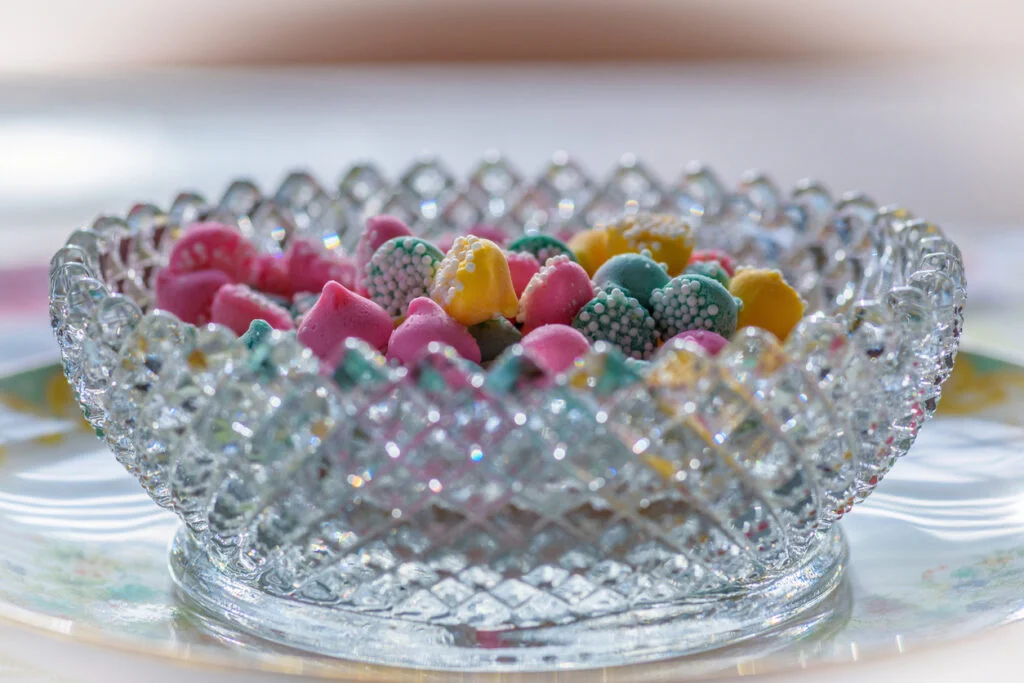
Nothing said “sophisticated living room” quite like a heavy lead crystal candy dish filled with individually wrapped butter mints or those strawberry hard candies with the soft centers. These sparkling vessels adorned coffee tables and buffets across America, usually remaining untouched except during holiday gatherings or when special company came to visit. The distinctive sound of the hefty lid being carefully placed back after selecting a treat added to the ceremonial feeling of indulgence that accompanied these rarely disturbed treasures. National Museum of American History shows how much this little, iconic household item has transformed over the decades.
In reality, those candies were often dusty, stuck together, or had been sitting there since last Christmas, and the dishes themselves were dust collectors that required special cleaning. Many of these crystal pieces weren’t even particularly valuable—they were mass-produced items from department stores rather than fine heirlooms, despite how carefully we treated them. Still, the presence of a candy dish signaled adult sophistication in a way few other household items could match, creating an invisible barrier between everyday snacking and “formal” candy consumption that children instinctively understood.
3. Wood Paneling
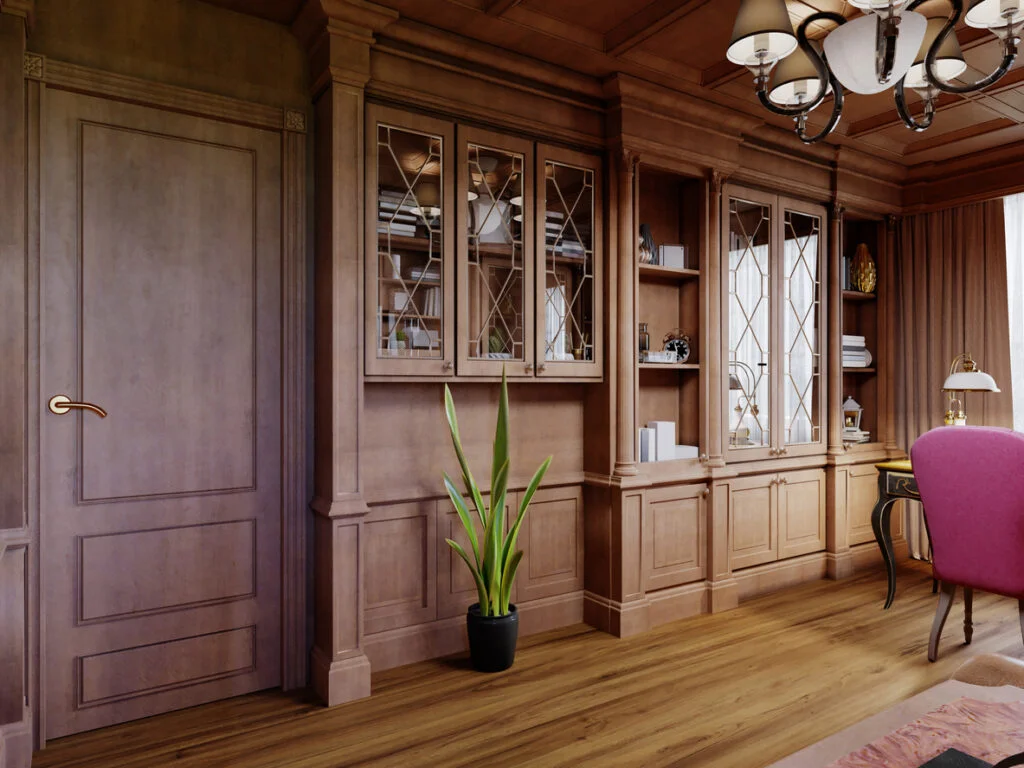
Having your den or basement finished with wood paneling transformed an ordinary room into what felt like an upscale country club or executive office. Those dark, glossy walls with their perfectly uniform “grain” patterns made everyone feel like they were relaxing in a hunting lodge or sophisticated study, complete with encyclopedias and perhaps a mounted fish. Homeowners proudly showcased their wood-paneled recreation rooms, often paired with a wet bar and perhaps a billiards table, as the height of suburban luxury and entertainment space. Old World Timber shows that wood paneling has its place in a modern home.
The truth was that most of this paneling wasn’t wood at all but wood-patterned laminate or thin veneer sheets that could be easily damaged by moisture or impact. The dark brown finish that seemed so rich and elegant actually made rooms feel smaller and darker, a decorating faux pas we wouldn’t recognize until the airy, light-filled home aesthetics of later decades made us wonder what we’d been thinking. Nevertheless, having a wood-paneled room was a status symbol that made middle-class homes feel upscale, despite being one of the more economical ways to finish a wall compared to proper drywall and paint.
4. Fondue Sets
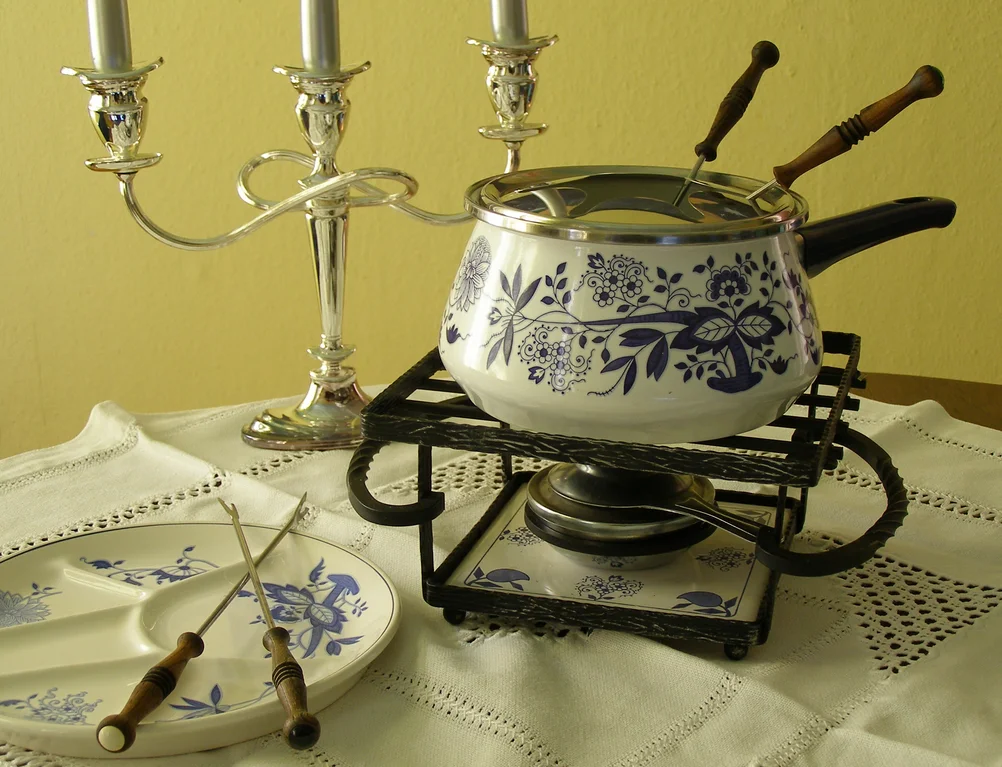
Owning a fondue set—preferably in harvest gold or avocado green—and hosting a fondue party represented the pinnacle of sophisticated entertaining in the 1960s and 70s. Gathering friends around a bubbling pot of cheese or oil, armed with long forks and a selection of dipping items, made average hosts feel like they were offering a cosmopolitan Swiss dining experience. The ritual of preparing the special recipes, arranging the dipping items on sectioned platters, and carefully monitoring the temperature created an air of culinary expertise far beyond the everyday casserole.
What we didn’t fully appreciate was that fondue originated as a practical way for Swiss peasants to use hardened cheese and stale bread during winter months when fresh food was scarce. The complicated setup often led to burned cheese, dangerous oil spills, or forgotten food items languishing in refrigerators (who really used all that cubed bread?). Most fondue sets ended up relegated to the backs of cupboards after just a few uses, emerging occasionally for retro-themed gatherings before being passed along at garage sales to the next aspiring host.
5. Encyclopedias

The family who owned a complete set of encyclopedias—displayed prominently on a dedicated bookshelf—projected an image of intellectual wealth and academic priority that few other possessions could match. These impressive matching volumes, often sold door-to-door at considerable expense, were treated with reverence and became the go-to source for school reports and settling dinnertime debates in the pre-internet era. Parents proudly displayed these investment pieces as evidence of their commitment to education, sometimes adding annual yearbooks to keep the collection current.
In reality, these expensive sets began outdating themselves the moment they arrived, with world events, scientific discoveries, and cultural developments quickly rendering certain entries obsolete. Many families stretched their budgets considerably to afford these status symbols, paying installments for years on volumes that received decreasing use as children grew older. Despite their limitations, these collections represented a genuine desire to bring knowledge into the home, even if much of that expensively bound information went unread except for emergency homework situations.
6. Shag Carpeting
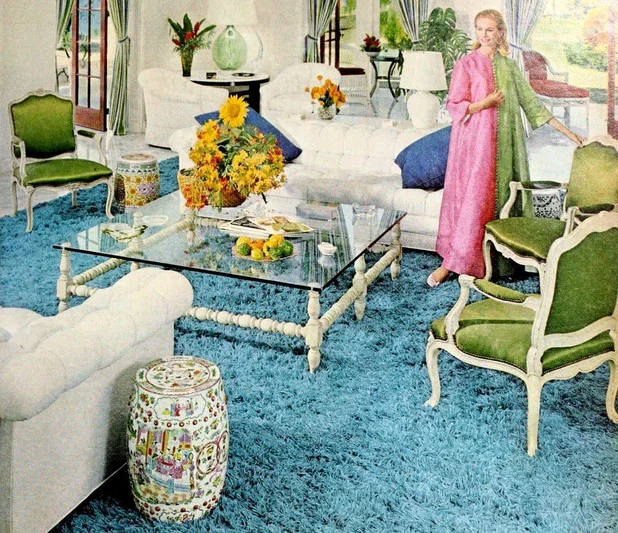
Wall-to-wall shag carpeting in vivid colors transformed ordinary living spaces into what felt like luxury accommodations, with homeowners proudly sinking their toes into the plush fibers that represented modern affluence. Vacuum tracks in a freshly cleaned shag carpet were displayed with the same pride as a perfectly manicured lawn, showing visitors that despite the casual appearance, serious maintenance was taking place. Particularly adventurous decorators might even carry the carpeting up bathroom walls or install it in unexpected places like kitchen islands, truly embracing the “more is more” philosophy of mid-century texture.
What we conveniently overlooked was shag carpeting’s remarkable ability to trap every crumb, dust particle, small toy, and pet accident, requiring special rakes and intense cleaning to maintain. The bold oranges, purples, and greens that seemed so fashionable quickly became visually overwhelming and dated, making rooms feel smaller and busier than was comfortable for everyday living. Perhaps most troubling was the carpet’s tendency to harbor allergens and odors that no amount of vacuuming could fully eliminate, a reality that became increasingly apparent as the initial excitement of installation faded.
7. Showcase Bathroom Soaps
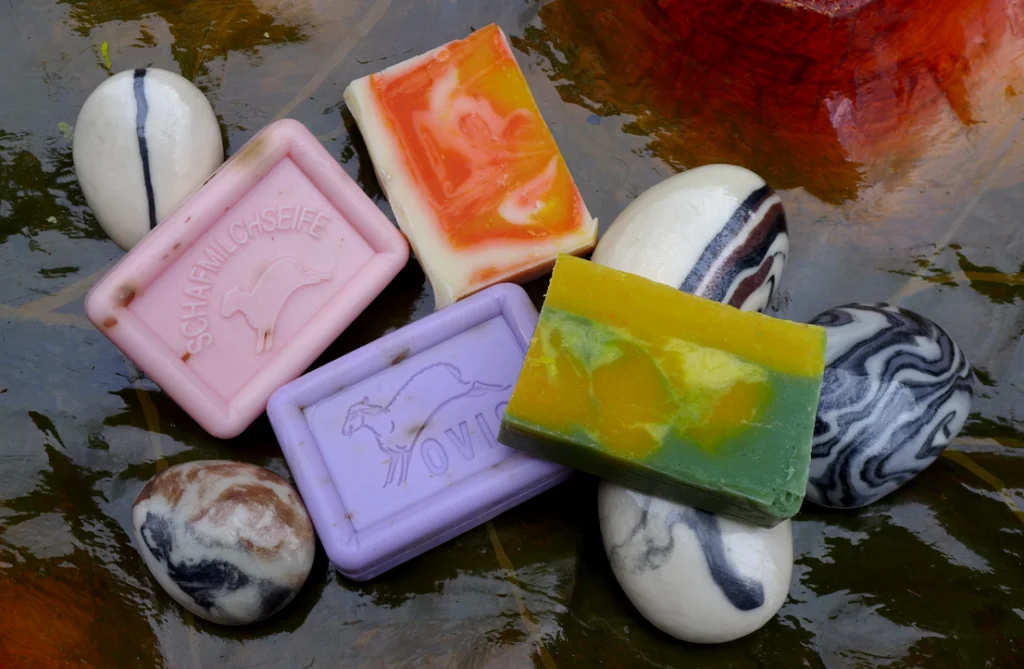
Those perfectly shaped decorative soaps—often in floral or seashell designs—accompanied by matching towels that were absolutely never to be used represented the epitome of bathroom elegance. Displayed in soap dishes or arranged in delicate bowls, these colorful creations were purely ornamental, with practical soap bars hidden discreetly in shower stalls or kept in drawers for actual handwashing purposes. Home decorating magazines reinforced this curious practice where the most beautifully packaged cleansing products were precisely the ones never permitted to touch water.
The reality of maintaining two parallel systems of bathroom products—decorative and functional—created extra expense and confusion, particularly for houseguests unsure whether they could disturb the pristine display. These soaps often became dust collectors that eventually lost their scent and color, requiring replacement long before serving their intended purpose. Nevertheless, a properly accessorized powder room with coordinated soap sets signaled hostessing prowess that many aspired to achieve, regardless of the impracticality.
8. Serving Food in Pineapple Boats or Bread Bowls
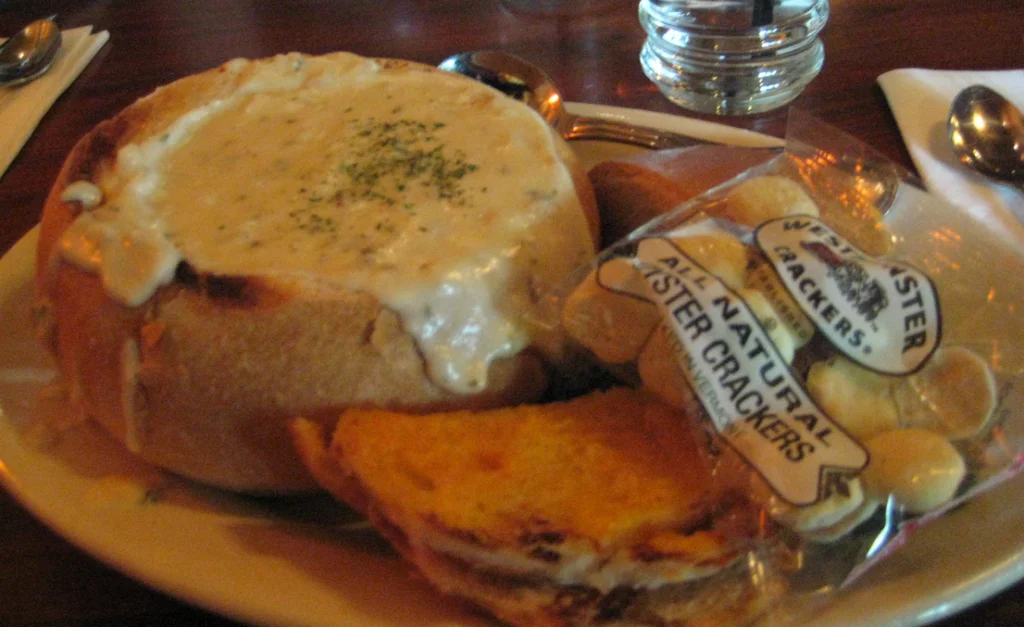
Hollowing out a pineapple to serve a fruit salad or tropical cocktail instantly elevated any backyard gathering to what felt like a sophisticated Hawaiian resort experience. Party hosts would proudly present these edible vessels—along with bread bowls for spinach dip or cream cheese spreads—as evidence of their entertaining prowess and attention to creative presentation. Recipes requiring these specialized serving containers were carefully clipped from women’s magazines and saved for special occasions, despite the considerable prep work involved.
Behind the impressive presentation lay the reality of sticky kitchen counters, wasted fruit flesh, and the challenging logistics of keeping these food containers from collapsing mid-party. The bread bowl inevitably became soggy, while the pineapple boat could develop an increasingly strong fermented aroma as the event progressed in warm weather. Still, guests genuinely appreciated these touches that transformed ordinary gatherings into memorable events, even if hosts privately questioned whether the effect was worth the effort.
9. Avocado Green Appliances
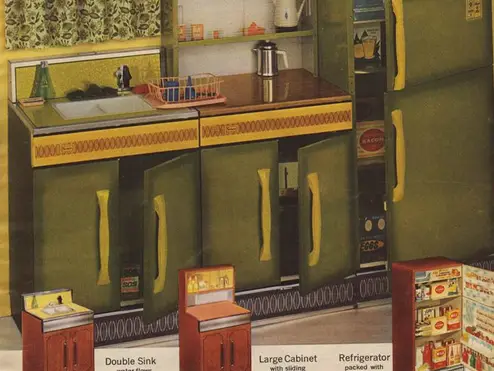
Owning a complete set of appliances in avocado green, harvest gold, or coppertone brown made homeowners feel like their kitchen had reached the height of contemporary sophistication. These colorful statement pieces represented a bold departure from basic white appliances, signaling that the homeowner was design-conscious and willing to embrace modern trends. Coordinating smaller appliances, canisters, and even dish towels to match these flagship items became a decorating mission for many households committed to kitchen cohesion.
In retrospect, these dated color choices severely limited design flexibility and quickly marked homes with a specific timestamp that became increasingly difficult to update. The manufacturing quality of these status-symbol appliances often didn’t match their fashion-forward appearance, with many failing prematurely or requiring expensive repairs. Nonetheless, walking into a fully coordinated avocado green kitchen made homeowners feel like they’d achieved a decorating milestone, even if that satisfaction would later be replaced by renovation dreams featuring stainless steel and neutral tones.
10. Coffee Table Books No One Read

Carefully selected oversized books about exotic locations, famous photographers, or architectural wonders served as intellectual props that suggested worldliness and sophisticated interests. These impressive tomes, often received as gifts or purchased specifically for display, were positioned at precise angles on coffee tables where their cover art could complement the room’s color scheme. The unspoken rule was that these books existed primarily for visual effect rather than reading, with content far less important than cover design and physical dimensions.
Most of these books remained permanently open to the same impressive photograph or illustration, their spines rarely cracked beyond the display position selected during their initial placement. The dust jackets were often removed to reveal more aesthetically pleasing bound covers, further emphasizing their role as decorative objects rather than reading material. Despite their primarily ornamental function, these books did occasionally provide entertainment for waiting guests and could spark conversations about places the book owners had never actually visited but could discuss as if they had.
11. Wagon Wheel Light Fixtures
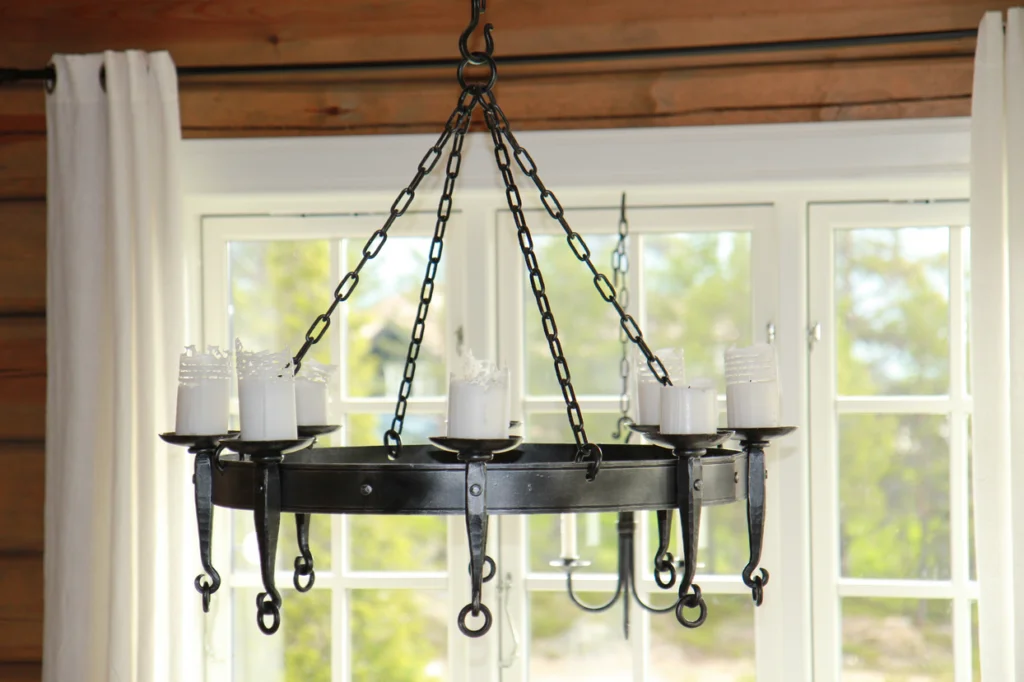
Installing a wagon wheel chandelier—complete with faux candles and perhaps some rustic rope detailing—transformed ordinary dining rooms into what homeowners imagined resembled exclusive country clubs or Western-themed restaurants. These substantial fixtures became centerpieces that announced a homeowner’s design confidence and willingness to make bold lighting choices beyond basic ceiling fixtures. Particularly ambitious decorators would complement these statement pieces with matching wall sconces or table lamps, creating a coordinated rustic-elegant theme throughout adjoining living spaces.
The reality was that these massive fixtures were dust-collecting behemoths that provided surprisingly poor lighting for actual dining activities like reading menus or seeing food clearly. Their considerable weight sometimes required ceiling reinforcement, and their size often overwhelmed modestly proportioned dining areas in typical suburban homes. Nevertheless, hosting dinner parties beneath the impressive circular presence of a wagon wheel light made everyday meals feel more special, even if guests occasionally had to duck to avoid contact when moving around the table.
12. Waterbed Ownership
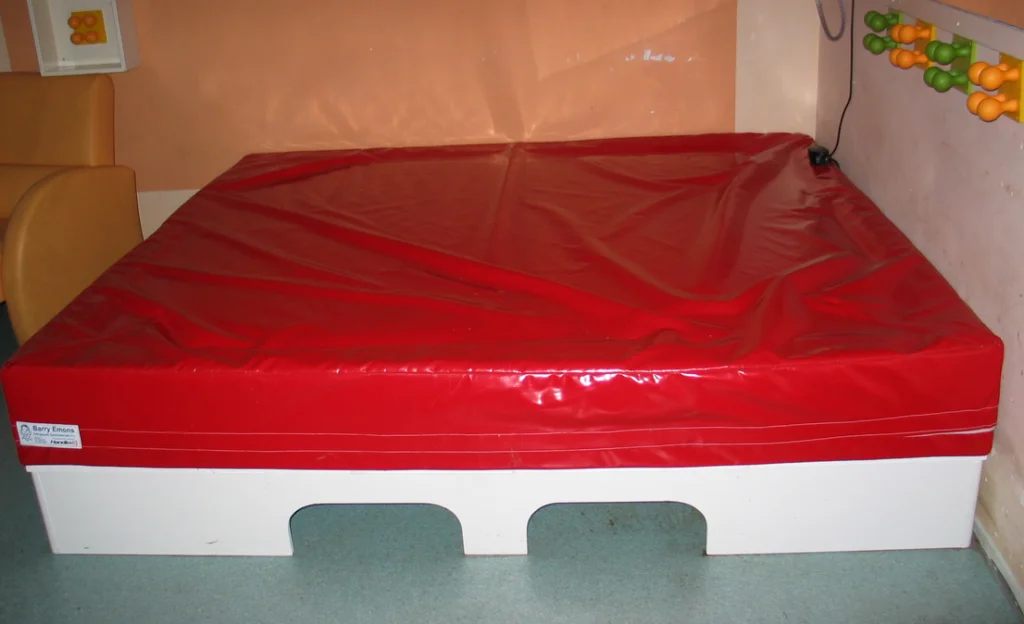
Perhaps nothing symbolized luxury and avant-garde living quite like replacing a conventional mattress with a waterbed, complete with heater, specialized sheets, and a wooden frame resembling a captain’s ship. Waterbed owners would enthusiastically describe the health benefits and superior comfort to anyone who would listen, proudly showing off the temperature controls and wave-reduction features that represented significant investments in sleep technology. The gentle undulation and consistent warmth created a sleeping experience that owners described in almost reverential terms, positioning themselves as pioneers of modern comfort.
What waterbed evangelists mentioned less frequently were the catastrophic potential of leaks, the complexity of moving, and the interesting challenge of intimate moments on an unstable surface. The hefty energy bills from constantly heating gallons of water and the specialized maintenance requirements made these beds far less practical than their conventional counterparts. Despite these drawbacks, having friends over to cautiously sit on the edge of your waterbed while you demonstrated its features made you feel like the most sophisticated homeowner on the block, particularly if your bed frame included built-in bookshelves and a mirrored headboard.
Looking back at these once-coveted status symbols brings a special kind of nostalgia—not just for the items themselves, but for how they made us feel at the time. There’s something endearing about our collective embrace of things that seemed so impressive then but appear so ordinary or even tacky now. Perhaps the real luxury wasn’t in the items themselves but in the feelings of achievement and social arrival they represented, markers of having “made it” in an era when material goods were powerful indicators of success and sophistication.


